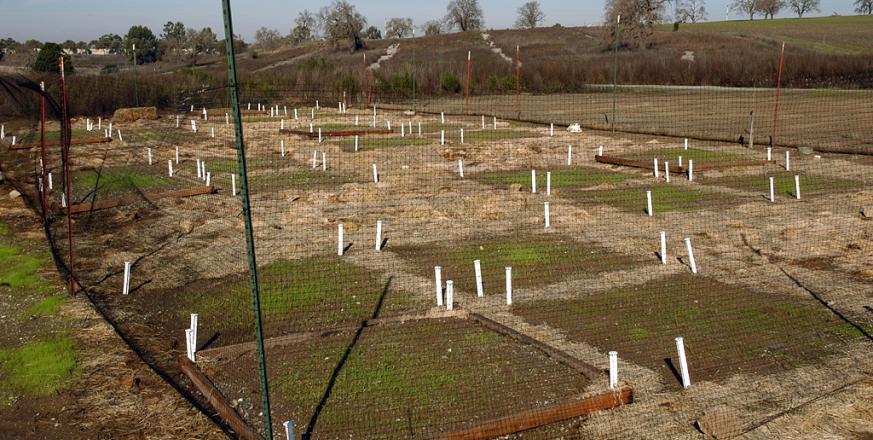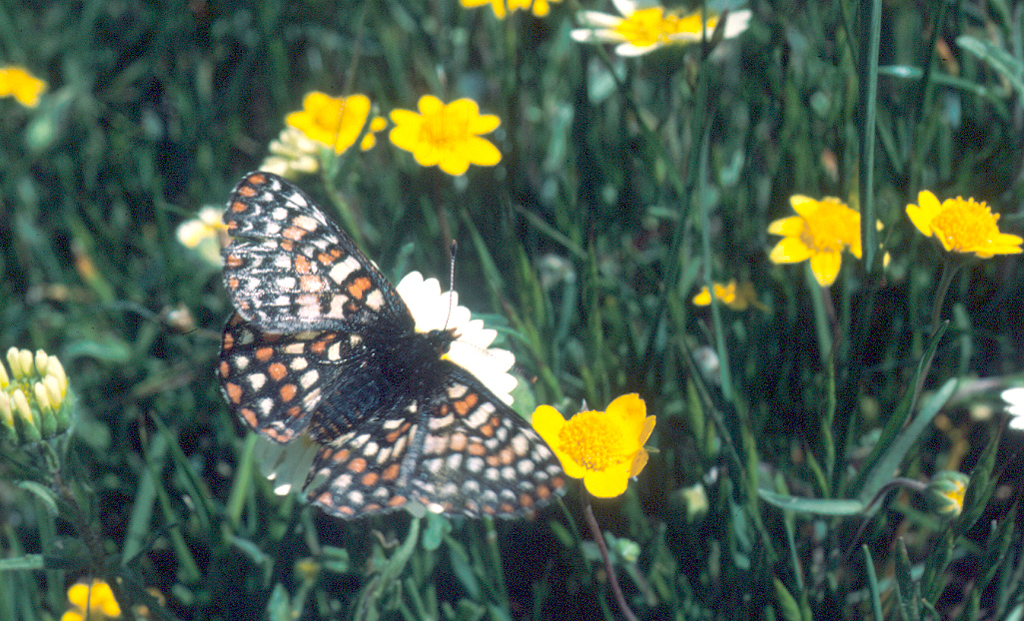Longterm studies of the Bay checkerspot butterfly and feasibility of reintroduction

Summary
The Bay checkerspot butterfly (Euphydryas editha bayensis) was federally listed as threatened in 1987 and deemed extinct at Jasper Ridge in 1998. Decades of intensive study by Prof. Paul Ehrlich and colleagues accumulated more information about the population fluctuations of this butterfly than probably any other non-vertebrate and made it a model system for many questions in conservation. Funded by the Stanford Institute for the Environment, professors from biology, history, soil science, and law are extending this legacy by examining diverse but fundamental issues in restoring any extinct species or lost habitat. The study will help determine whether and how to attempt a reintroduction of Bay checkerspots to Stanford lands.
The Bay checkerspot is restricted to serpentine grasslands, where its native larval host plants (Plantago erecta, Castillejaspp.) and adult nectar plants (Lasthenia californica, Linanthus parviflorus, Layia platyglossa) persist. In many areas, these natives are being out-competed by invasive Eurasian grasses. One goal of the study is to test several methods for creating suitable new habitat. At a disturbed site where the surface soil was scraped away, four soil treatments were applied: a layer of serpentine gravel; magnesium sulfate to shift soil chemistry toward that of serpentine; grazing; or nothing. PhD student Tim Bonebrake sowed a mixture of serpentine and non-serpentine seeds to all treatments and, in spring, will assess their similarity to serpentine grassland.
Other goals are to: 1) analyze the regulatory framework for endangered species and how changes might aid recovery efforts for species like the Bay checkerspot; 2) characterize the genetics of research collections and possible donor populations as a basis for reintroductions; and 3) look at historical changes in the ownership, management, and condition of serpentine grasslands. PhD student Jon Christensen is researching this aspect.
Project Location (Sector 26)
 |  |  |  |  |  |  |  |  |
 |  |  |  |  |  |  |  |  |
 |  |  |  |  |  |  |  |  |
 |  |  |  |  |  |  |  |  |
 |  |  |  |  |  |  |  |  |
 |  |  |  |  |  |  |  |  |




